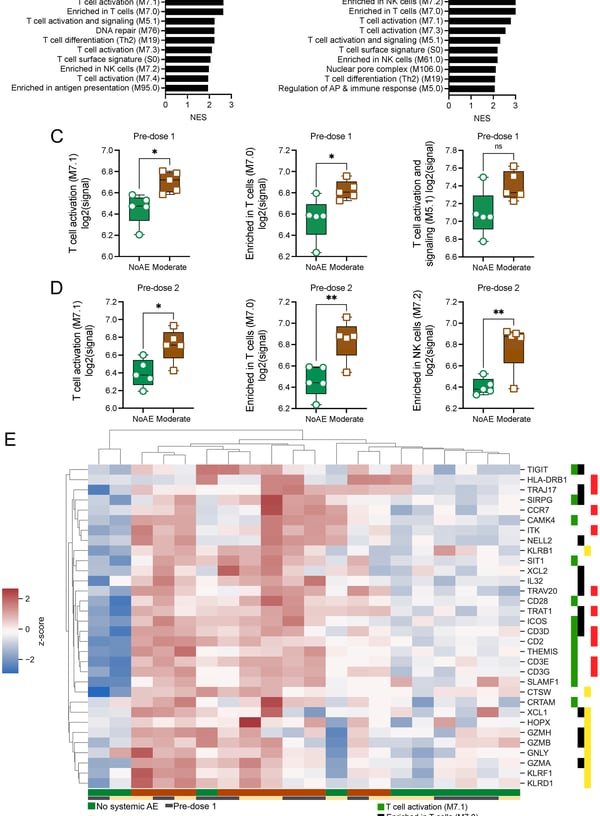One of most common side effect after receiving the Pfizer vaccine is fatigue, where some individuals may experience tiredness and lethargy around 1-3 days post vaccination. Some curious questions that we posed were: Can we use transcriptomics to predict who is more likely to experience these side effects? Secondly, is it possible to reduce these side effects without compromising vaccine efficacy? We believe answering these questions may help in future development of vaccines that are both safe and immunogenic.
Using a microarray analysis, we uncovered that individuals with higher abundance of T-cell and NK-cell transcripts at baseline is associated with more vaccine-induced side effects, especially fatigue. The same signatures are seen in both the first or second dose of the vaccine. Of note, many of the transcripts are involved in immune cell activation, indicating that the activation status of T-cells and NK-cells at baseline can influence the risk of side-effects after vaccination (See left figure).
Having shown that the abundance of immune cell activation can influence adverse events after vaccination, we attempted to modulate the immune cell activation status after vaccination by altering the route of vaccine administration. Compared to intramuscular administration, we observed that subcutaneous administration of the vaccine resulted in lower weight loss in mice after vaccination. Nanostring analysis revealed that subcutaneous administration resulted in reduced inflammatory responses as compared to intramuscular administration. However, the efficacy of the vaccine is not compromised, hinting at the possibility that changing to subcutaneous route of vaccine administration can potentially reduce vaccine adverse effects without compromising vaccine efficacy.
Overall, we demonstrated the baseline signatures, particularly in the T and NK cells, that can influence fatigue responses after mRNA vaccination. Changing the route of vaccine administration could be one strategy to reduce adverse event outcome. Work is done with clinicians and scientists at Duke-NUS Medical School, VIREMICs and Singapore General Hospital. Full article is accessible at: https://journals.plos.org/plosbiology/article?id=10.1371/journal.pbio.3001643


